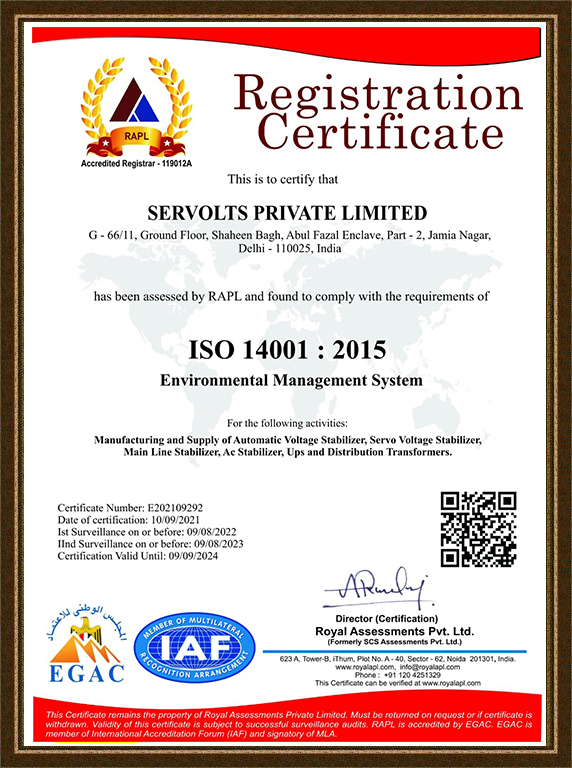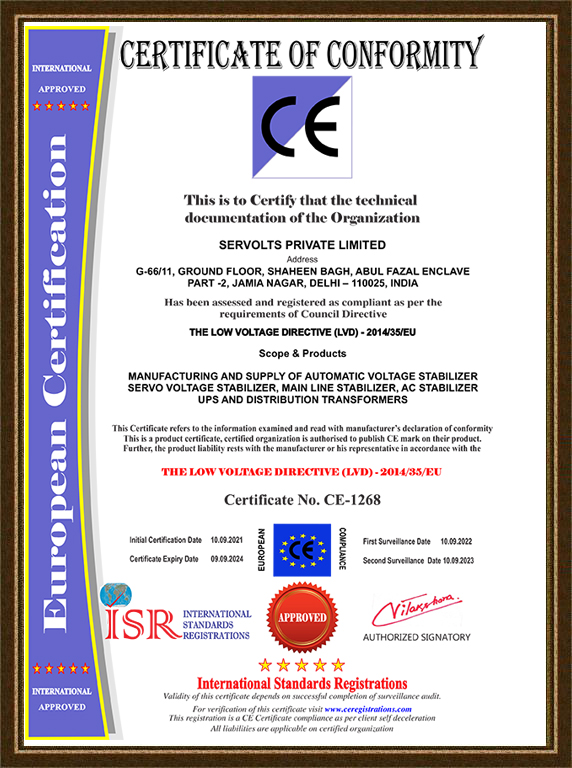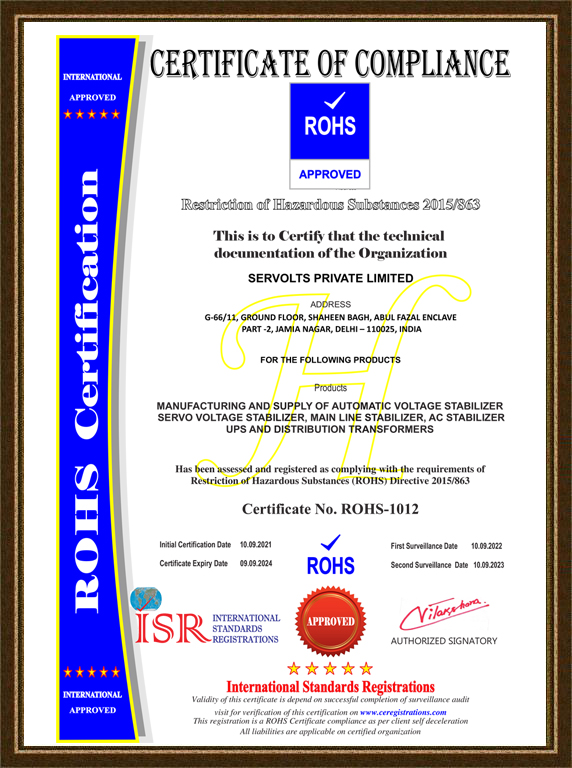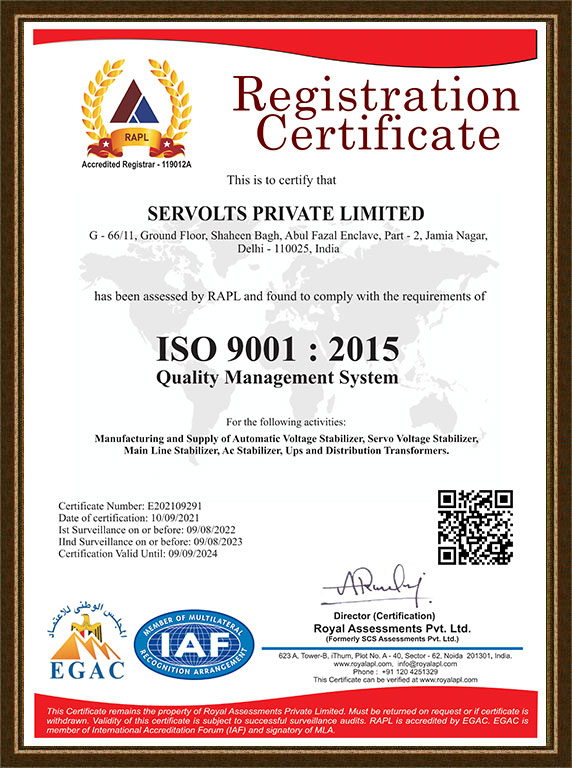Linear Unbalanced Servo stabilizers
Unbalance linear servo stabilizer utilizes three rollers/motors to control all three-phase components individually, resulting in enhanced control over fluctuations. This level of independent control allows for superior stabilization and protection against voltage fluctuations, safeguarding your equipment and systems from potential damage. This approach incorporates negative feedback mechanisms, ensuring improved stability and precise regulation. Particularly effective in managing broad fluctuation ranges. By treating each phase independently, we ensure precise and effective regulation for all your power needs. It’s important to note that the enhanced control and versatility of this type of Stabilizer do come at a slightly higher cost compared to the balanced alternative. However, the benefits and improved performance justify the investment.
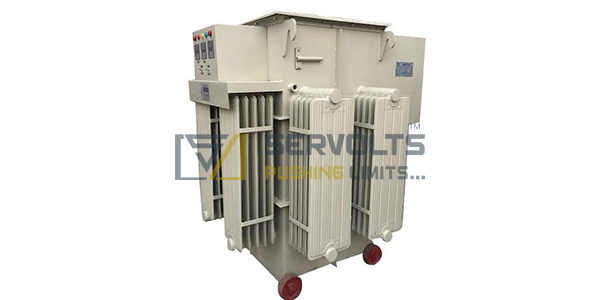
Components of Linear Unbalanced Servo stabilizers
- Linear type continuously variable voltage regulator
- Buck and Boost transformer
- Cut Off signal for over/under voltage protection
- Voltmeters
- Ammeter
- MCCB
- Earthling Terminal
- Junction Box
- Thermometer Pocket
- Chain Pulley
- Carbon Roller
- Tank
- Transformer Oil
Salient features
- Good insulation with stands capacity and windings material used. Can be used in any premises, applicable for both indoor as well as outdoor installations.
- Motorsdraw 16-21% less amount of current.
- Provision of limiting switches that are contractors, Relays, and switchgear.
- Five years guarantee.
- The best protection against under/over voltage and surge spikes.
- Improved power factor
- Efficiencyof the Rolling Contact Stabilizer is approximately 98% to 99% resulting inminimum losses and lesser electricity bill, better efficiency with reduction in MDI.
- The rolling contact servo has better conduction as the copper conductor used in therolling servo is of Copper Strip and not copper wire; the copper strip so use dserves as a better current-carrying conductor.
- The best protection against under/over voltage and surge spikes.
Applications
- Air Conditioning Plants & VRV Systems
- Medical Voltage-sensitive types of equipment
- Offset Printing Machines
- CNC Machines, Escalators & Elevators
- Industries loads & Lighting Loads
- Shopping Mall & Commercial Complexes,Residence & Office
- BPO & Telecommunication systems
- Instruments Laboratory pieces of equipment
- Defence and Army purpose
- Motors
- Concrete and Cement Plants
- Hotels, SPA, MALL, Cafe and Restaurants
- All types of Industries
- R&D Institutions
- Data Centres
- Distilleries & Beverages
- Tea Estates
- Meteorological Equipment Food Processing Units
- Cold Storages & Rubber Plants
- All types of Mills & RO Plants.
Here's how a linear servo voltage stabilizer typically works:
Input Voltage Sensing: The stabilizer continuously monitors the input voltage using a sensing circuit.
Voltage Comparison: The sensed input voltage is compared with a reference voltage, which is usually set at the desired output voltage level.
Error Detection: Any difference between the sensed input voltage and the reference voltage creates an error signal.
Servo Motor Control: The error signal is fed into a control circuit, which activates a servo motor.
Voltage Adjustment: The servo motor, based on the error signal, adjusts the position of an autotransformer or a series of taps on a transformer winding.
Output Voltage Stabilization: The movement of the servo motor alters the position of the transformer taps, effectively adjusting the turns ratio and thereby regulating the output voltage.
Key features of a linear servo voltage stabilizer include:
High Accuracy: Linear servo stabilizers are known for their precise voltage regulation, providing a stable output voltage within a narrow tolerance range.
Fast Response Time: The servo motor-driven mechanism allows for quick adjustments to voltage fluctuations, resulting in a rapid response time.
Wide Input Voltage Range: These stabilizers can operate across a wide input voltage range, accommodating various input voltage conditions.
Overload Protection: Many linear servo stabilizers include overload protection mechanisms, such as circuit breakers or fuses, to safeguard connected equipment from excessive currents.
Low Harmonic Distortion: Linear servo stabilizers typically have low harmonic distortion, ensuring a clean and reliable power supply.
Long Service Life: With proper maintenance, linear servo voltage stabilizers are designed to have a long service life and provide consistent voltage regulation over time.
Choose our technology to experience reliable, efficient, and customized stabilization solutions for your specific requirements. With our advanced control mechanisms and commitment to quality, we are dedicated to providing you with the highest level of satisfaction and peace of mind.
Available stock with various Capacity/Rating
|
RATINGS |
VOLTAGE INPUT SELECTION RANGES |
OUTPUT VOLTAGE |
|
30 to 3000KVA |
300V-460V |
415V+-1% |
|
30 to 3000KVA |
320V-460V |
415V+-1% |
|
30 to 3000KVA |
330V-470V |
415V+-1% |
|
30 to 3000KVA |
340V-470V |
415V+-1% |
|
30 to 3000KVA |
350V-470V |
415V+-1% |
|
30 to 3000KVA |
320V-480V |
415V+-1% |
|
30 to 3000KVA |
330V-480V |
415V+-1% |
|
30 to 3000KVA |
340V-480V |
415V+-1% |
|
30 to 3000KVA |
350V-480V |
415V+-1% |

